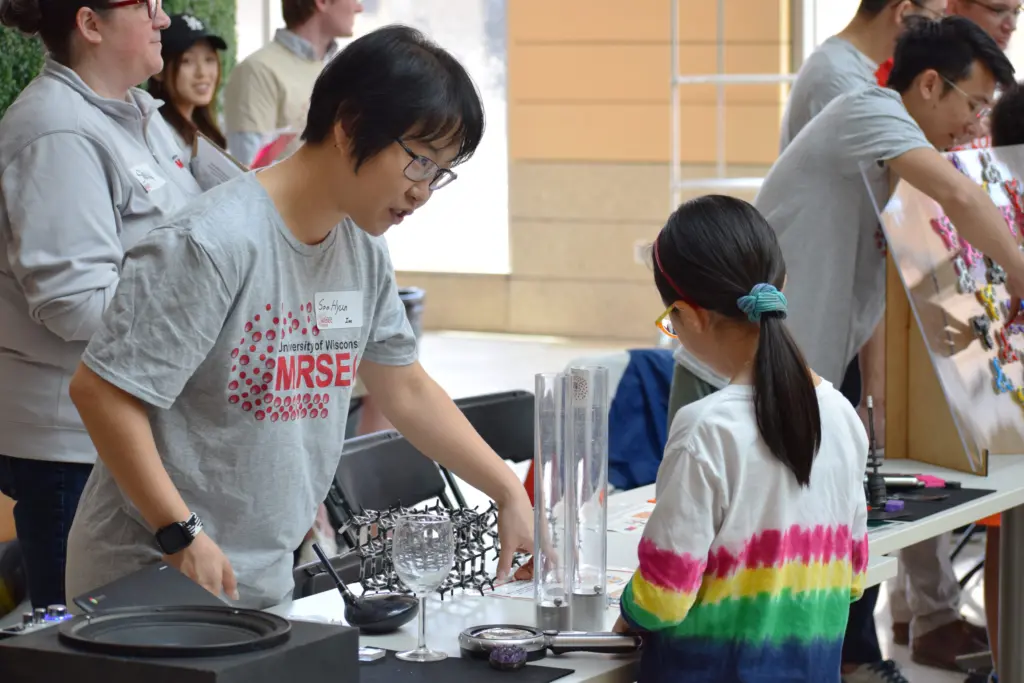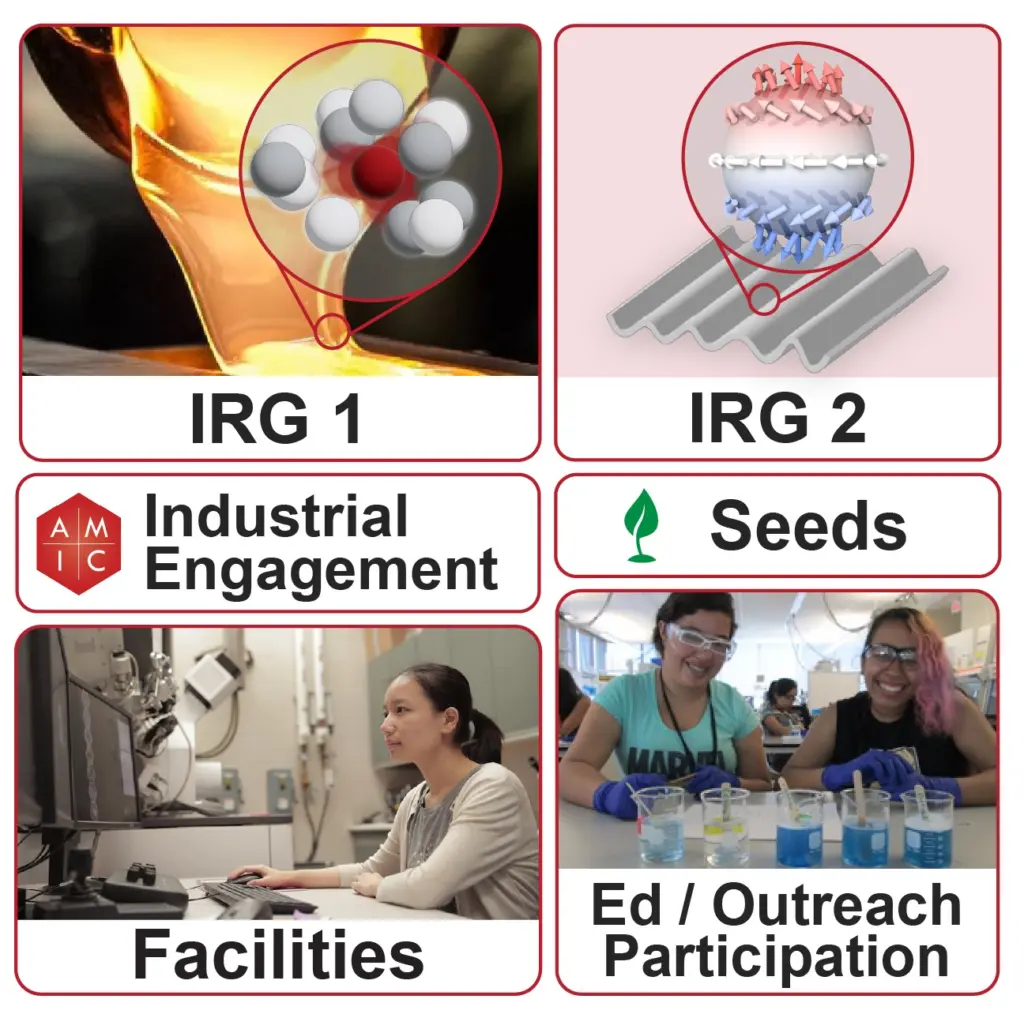The University of Wisconsin-Madison Materials Research Science and Engineering Center (MRSEC) has received $18 million in funding from the National Science Foundation (NSF) for interdisciplinary exploration of fundamental questions in materials science.
The grant will provide six years of funding for MRSEC, which includes more than 30 affiliated faculty from nine departments across the university, as well as collaborators at other institutions and in industry. MRSEC is one of 21 such NSF-funded centers that conduct fundamental materials research, education, and outreach at the nation’s leading research institutions.
This round of funding marks a quarter century of support for the UW-Madison MRSEC, a testament to its successful efforts to investigate fundamental, interdisciplinary questions in materials science and provide outstanding educational opportunities and outreach efforts in the community.
“Our continued success reflects the strength and breadth of the materials research effort across campus,” says Paul Voyles, UW-Madison MRSEC director and a professor of materials science and engineering. “It takes an institution with the overall excellence of UW-Madison to continuously maintain the high level of research necessary for one of these centers.”
 Post-doctoral researcher Soohyun Im is one of many MRSEC members who bring materials science education to students from all walks of life during outreach events. Credit: MRSEC.
Post-doctoral researcher Soohyun Im is one of many MRSEC members who bring materials science education to students from all walks of life during outreach events. Credit: MRSEC.
Research supported by the UW-Madison MRSEC has led to liquid crystals useful in sensing toxic gases, new types of semiconductors that could power next-generation devices, a deeper understanding of carbon nanotubes that could be important in next-generation solar, advances in the synthesis of thin film oxides that could lead to new electronic devices, new understandings of glass, which could lead to tougher versions of the material and new types of organic electronic computer displays or photovoltaic cells, and countless other advances. The MRSEC has launched 13 startup companies in areas ranging from scientific instrumentation to medical diagnostic technologies.
The UW-Madison MRSEC has two interdisciplinary research groups, an inclusive education outreach team, shared instrument facilities, and the Advanced Materials Industrial Consortium.
The research thrusts bring together teams of researchers from diverse backgrounds to better understand disordered materials, including various types of glass, as well as the emergence of order from disordered materials. The first thrust, co-led by Voyles and Izabela Szlufarska, Harvey D. Spangler Professor and Chair of the Department of Materials Science and Engineering, will study mobility in glass and supercooled liquids.
“Our goal is to create predictive models of how atoms and molecules move inside liquids and glasses,” says Voyles. “Despite the fact that we use tons of glass every year to cover skyscrapers and carry information, we still don’t understand how to predict, from first principles, how atoms and molecules inside a glass move.”
 Credit: Zoe Zou.
Credit: Zoe Zou.
That’s key to synthesizing new materials and understanding how they react to external stimuli—for example, how they bend, break and react to heat or cold. The researchers will use new experimental tools, including low-dose 4D scanning transmission electron microscopy, to investigate these materials. MRSEC is also bringing in new faculty members specializing in AI and machine learning to help model these materials.
The second research group, led by Jason Kawasaki, an associate professor of materials science and engineering and Uwe Bergmann, the Martin L. Perl Endowed Professor in Ultrafast X-Ray Science in the Department of Physics, focuses on magnetic states in strained membranes.
UW-Madison MRSEC faculty include leading experts in thin-film crystal synthesis capable of producing membranes of novel materials just 10 nanometers thick. Straining these membranes changes the distance between atoms, introducing symmetry-breaking gradients and unique magnetic states.
MRSEC researchers will explore strain in these materials using cutting-edge spectroscopy, X-ray diffraction and other characterization techniques in hopes of understanding and controlling these new magnetic states. That could lead to fast, high-density memory storage devices and could be highly useful in advancing quantum computing.
“This research focus brings together experts in magnetic membrane synthesis, ultrafast measurements and theory to tackle big challenges in the control of magnetic materials,” say Bergmann and Kawasaki. “These materials have potential applications for ultrafast data transmission and storage. Problems of this scope can only be addressed by large and interdisciplinary collaborative efforts like MRSEC.”
Another priority for MRSEC is support of facilities for materials research on campus, including the Nanoscale Imaging and Analysis Center, Soft Materials Characterization Lab, Nanoscale Fabrication Center, and others. During this grant period, the center plans to launch a new user system called X-FAST, or extreme ultraviolet femtosecond absorption spectroscopy, designed and built by Bergmann. The center will upgrade the machine and make it available to scientists from around the world.
The center will also continue its tradition of outreach excellence, bringing materials science education to students, led by Faculty Associate Anne Lynn Gillian-Daniel and Ahna Skop, a professor of genetics and life sciences communication.
While they have already reached more than two million students through past efforts, they hope to engage new groups. “The Wisconsin MRSEC is nationally recognized for its success in exciting public and K-12 audiences about materials science and engineering through hands-on, research-inspired activities led by world-class researchers,” says Gillian-Daniel. “With the new grant, we are leveraging our education and outreach expertise and building partnerships with community experts to create educational activities and outreach experiences that are accessible to people who are blind or visually impaired and to families who are economically disadvantaged.”
MRSEC also will continue to run the Advanced Materials Industrial Consortium, a group of industry partners that also provides invaluable professional development opportunities for UW-Madison students and researchers.
Voyles says MRSEC is an incredible asset for collaborative, interdisciplinary science across UW-Madison. “The MRSEC has driven critical aspects of the materials research culture on campus, including an openness and flexibility toward interdisciplinary research,” he says. “And the idea that materials research at UW-Madison extends well beyond the walls of the Materials Science and Engineering Building.”
Featured image caption: Associate Professor Jason Kawasaki is co-lead of a MRSEC research thrust investigating magnetic states in strained membranes, which could lead to new types of ultrafast data transmission and storage. Credit: Steph Precourt.